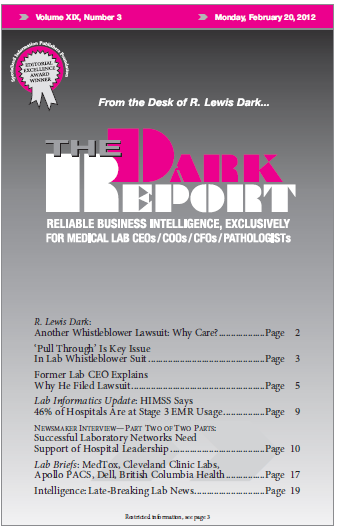CEO Summary: In the second installment of our exclusive two- part interview, the executive directors of two regional laboratory networks formed in the 1990s (one in Michigan and one in Washington State) share their assessment of why their respective lab networks have performed strongly over the past two decades. They also identify the reasons why …
Shaw & Adelman Successful Support of Lab Networks Need Hospital Leadership Read More »
To access this post, you must purchase The Dark Report.


